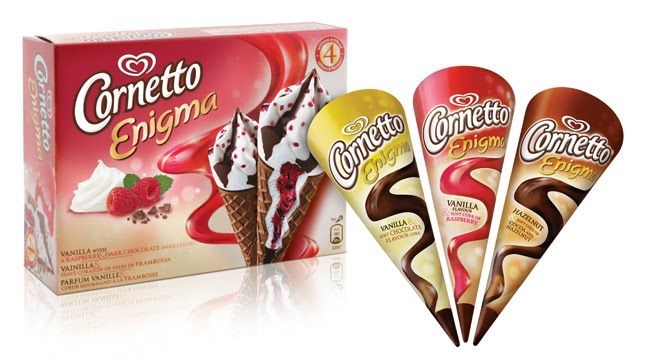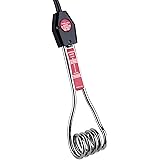When it comes to ice cream, the packaging plays a crucial role not only in protecting the product but also in ensuring it stays fresh and appealing to customers. Whether you’re a manufacturer looking to package your ice cream or a business owner who wants to understand the best packaging options, knowing the key features to look for in ice cream packaging boxes is essential.
Here’s a detailed guide to help you understand the top features to look for in ice cream packaging boxes:
1. Insulation and Temperature Retention
One of the most important aspects of ice cream packaging is its ability to maintain the cold temperature. Ice cream must stay frozen to preserve its taste and texture, so the packaging needs to provide effective insulation. Look for materials that can resist heat transfer, such as:
- Foam-lined containers: These boxes have a layer of foam or insulated materials that trap cold air inside and protect the ice cream from external heat.
- Thermal barriers: Some boxes come with a built-in thermal barrier to slow down heat absorption and prevent the ice cream from melting too quickly.
- Double-layered packaging: Boxes with two layers of material can offer better insulation by trapping air between the layers, which helps keep the ice cream at the right temperature longer.
2. Durability and Strength
Ice cream boxes must be strong enough to handle transportation and storage. The packaging should prevent any damage to the ice cream, especially since it’s a frozen product that can be more fragile than others. Key features to look for include:
- Sturdy materials: Boxes made from strong paperboard, corrugated cardboard, or plastic are commonly used. These materials provide strength and protection against external forces during shipping.
- Tear and puncture resistance: Choose boxes with a thicker structure or extra protective layers to prevent tears, dents, or punctures that could damage the ice cream.
3. Moisture Resistance
Moisture can affect the quality of ice cream and the packaging itself. The ice cream can sweat, creating condensation that may cause the packaging to weaken or become soggy. Look for packaging materials that resist moisture, such as:
- Waterproof coatings: Some ice cream boxes are coated with water-resistant layers that help keep moisture from seeping into the box.
- Plastic liners: Some boxes feature an inner plastic lining to protect the ice cream from moisture and help keep the outer packaging intact.
4. Eco-friendliness
With growing environmental concerns, many consumers and businesses prefer eco-friendly packaging solutions. As a result, ice cream packaging companies are now offering more sustainable options. Look for:
- Recyclable materials: Packaging made from recyclable paperboard or cardboard is a great option for businesses focused on sustainability.
- Biodegradable options: Some manufacturers offer biodegradable ice cream packaging that breaks down naturally over time, reducing environmental impact.
- Reduced plastic use: Choosing boxes with less plastic or more sustainable materials can appeal to eco-conscious customers and help your brand stand out.
5. Leak-Proof Design
Leakage is a common problem with ice cream packaging, especially if the box isn’t sealed properly or if the product starts to melt. This can lead to messy spills and loss of product quality. To prevent leakage, look for:
- Sealed lids: Ensure the packaging features a tight, secure lid or seal that prevents the ice cream from leaking out.
- Leak-proof construction: Some boxes are specially designed with leak-proof bottoms or liners to contain any moisture from melted ice cream, keeping your product intact and preventing contamination.
6. Visibility and Transparency
Packaging should also allow customers to see the ice cream inside. This is especially important for products with attractive colors, textures, or unique designs. Transparent window packaging can make your ice cream stand out and entice potential buyers. Consider:
- Clear windows or panels: Boxes with clear windows allow consumers to view the ice cream, making it easier for them to see the quality of the product.
- Printed designs: Many ice cream boxes come with custom prints or graphics that showcase the flavor or branding, while still allowing for some visibility of the ice cream inside.
7. Size and Shape Variety
Ice cream comes in many different forms, from individual cups to large tubs, and the packaging must match the size and shape of the product. The box should be appropriately sized to hold the ice cream securely and prevent movement that could lead to damage. Some features to consider:
- Custom sizes: Boxes that are tailored to fit specific portion sizes (e.g., individual servings, pints, or larger containers) will ensure a snug fit and avoid wastage of materials.
- Stackable design: Packaging designed for easy stacking helps maximize storage space in freezers, which is useful both in retail and at home.
8. Branding and Aesthetics
In the competitive world of ice cream, attractive and well-designed packaging can make a significant impact on a consumer’s decision to purchase. Ice cream packaging should be visually appealing, helping your brand stand out on store shelves. Key aspects include:
- Bright colors and designs: Vibrant colors and attractive graphics can create an eye-catching design that reflects the fun and enjoyment of eating ice cream.
- Clear branding: Your logo, flavor names, and other essential information should be prominently displayed to attract customers and build brand recognition.
- Creative packaging styles: Unique shapes or designs can help make your packaging more memorable and appealing, giving your product a distinctive look.
9. Convenience for Consumers
Finally, ice cream packaging should be easy for consumers to use. Packaging that’s easy to open, store, and handle can enhance the customer experience. Look for features such as:
- Easy-to-open lids: Packaging with pull-tabs, easy-peel seals, or resealable lids makes it convenient for consumers to access and enjoy their ice cream without hassle.
- Portion control: Some ice cream packaging comes with pre-measured portions or scoops built into the design, making it easier for customers to enjoy their product without the need for additional tools.
Conclusion
When choosing ice cream packaging boxes, it’s important to consider factors like insulation, durability, eco-friendliness, and design. Good packaging ensures that your ice cream stays fresh and protected during transport, while also appealing to customers and promoting your brand. By focusing on these key features, you can ensure that your ice cream packaging meets both practical needs and customer expectations, ultimately boosting your sales and brand reputation.
Godrej aer Matic Kit (Machine + 1 Refill) - Automatic Room Fresheners with Flexi Control Spray | Violet Valley Bloom | 2200 Sprays Guaranteed | Lasts up to 60 days (225ml)
₹419.00 (as of 22 November, 2024 18:32 GMT +05:30 - More infoProduct prices and availability are accurate as of the date/time indicated and are subject to change. Any price and availability information displayed on [relevant Amazon Site(s), as applicable] at the time of purchase will apply to the purchase of this product.)Milton Thermosteel Flip Lid Flask, 1000 milliliters, Silver
₹963.00 (as of 22 November, 2024 18:32 GMT +05:30 - More infoProduct prices and availability are accurate as of the date/time indicated and are subject to change. Any price and availability information displayed on [relevant Amazon Site(s), as applicable] at the time of purchase will apply to the purchase of this product.)HomeStrap Set Of 6 Non-Woven Printed Saree Cover/Cloth Storage/Wardrobe Organizer For Clothes With Transparent Window(Grey)(Shark Tank Featured),45 Cm,22 Cm
₹359.00 (as of 22 November, 2024 18:32 GMT +05:30 - More infoProduct prices and availability are accurate as of the date/time indicated and are subject to change. Any price and availability information displayed on [relevant Amazon Site(s), as applicable] at the time of purchase will apply to the purchase of this product.)Thamada Mart® Handy Electric Heater, 400 Watts Heater, Plug-In Heater, Mini Heater, Portable Room, Office, Bedroom Heater/Warmer with LED Display, Set Temperature, and Stylish Design (Black)
₹639.00 (as of 22 November, 2024 18:32 GMT +05:30 - More infoProduct prices and availability are accurate as of the date/time indicated and are subject to change. Any price and availability information displayed on [relevant Amazon Site(s), as applicable] at the time of purchase will apply to the purchase of this product.)Bajaj Immersion 1500 Watts Water Heater Rod | Nickel Plated Heating| Copper | ISI Certified | 2 Years Warranty | Silver
₹599.00 (as of 22 November, 2024 18:32 GMT +05:30 - More infoProduct prices and availability are accurate as of the date/time indicated and are subject to change. Any price and availability information displayed on [relevant Amazon Site(s), as applicable] at the time of purchase will apply to the purchase of this product.)Discover more from The General Post
Subscribe to get the latest posts sent to your email.





